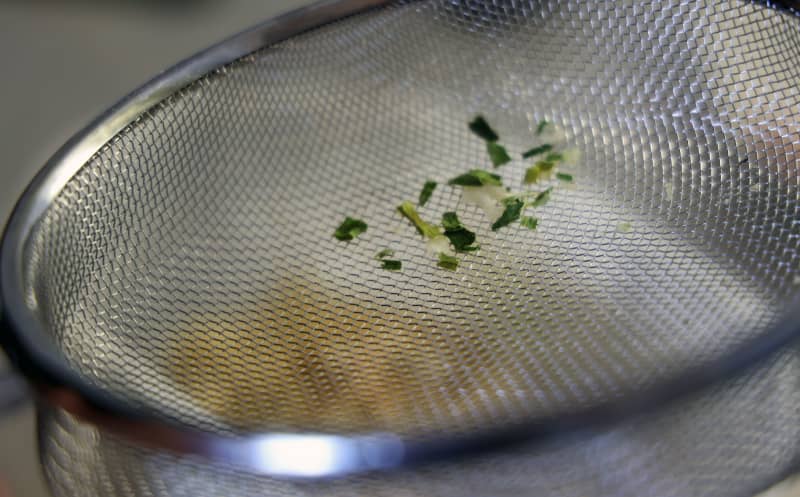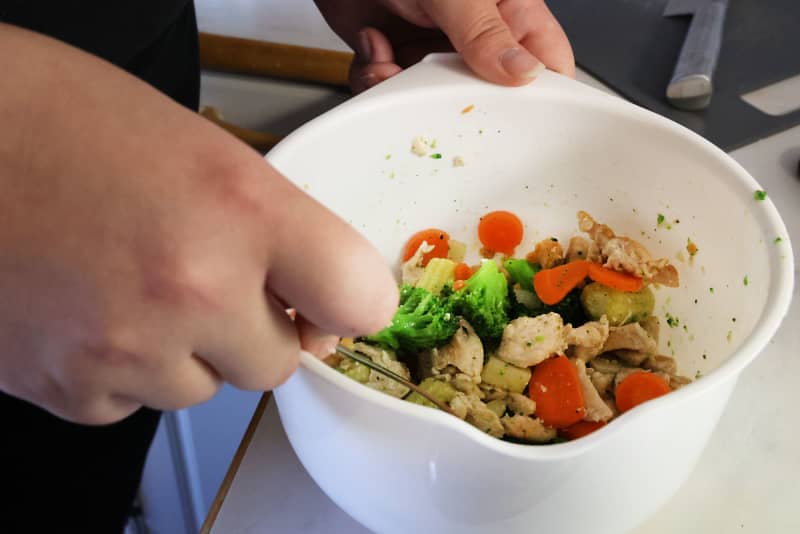Many adults feel ashamed of their restricted diet. The pickiness is not necessarily due to taste. You can try to expand your diet if you are motivated.
– It’s easier to list what to eat than what not to eat. The food I eat is really reduced.
Many mayonnaise, marinades and vegetables disgust Huovilani. He can eat pieces of chicken, but they must not be “ugly looking”.
Food selectivity is often associated with young children who are just getting used to the flavours. But pickiness is not just a phase of a certain age. It’s just that children’s food sensitivity has been studied more than adults’.
The prevalence of nirsoude has varied a lot in studies depending on the age and culture of the children. According to some studies, about one in ten children could be classified as a picky eater.
Pickiness is not necessarily a matter of taste
Food doesn’t always taste good. For example, the smell of canned food sometimes haunts Huovilai. It is difficult for him to define why, for example, whipped cream does not go down.
– It’s not bad. I don’t know what the problem is. Is the foamy slime the reason I can’t eat it?
Many things affect the experience of food. According to Professor Sandell, the selectivity of food may be influenced by, for example, temperament and previous food experiences.
Sandell has studied how food is a multi-sensory experience. When talking about the deliciousness or disgustingness of food, it’s not just about the taste. Food can also activate the sense of sight, smell, hearing and touch.
– For example, food can look so suspicious, untrustworthy or disgusting that a person doesn’t even want to taste it. Food has to pass the senses of sight, smell, hearing and touch in order to reach the mouth. While still in the mouth, the sense of touch is very effective.

Pickiness can also be caused by sensitivity to different tastes.
Some people are more sensitive to, for example, umami, i.e. meatiness, while others are more sensitive to bitterness, acidity or saltiness. According to research, 15 percent of people are sensitive to taste characteristics. They therefore taste all taste characteristics more sensitively than average.
How many repetitions does it take to get used to it?
People suffering from eating disorders come to the office of nutritionist Puustisinen. Challenges related to food selectivity are also discussed with many patients.
Food selectivity is not necessarily a sign of an eating disorder. Many are able to enjoy food despite their limitations. You should be concerned about a narrow diet if the intake of nutrients is compromised or avoiding food causes social harm, i.e. the person avoids meeting other people, for example.
If the situation is not serious, you can diversify your diet by trying the dietitian’s methods yourself.

At the nutritionist’s reception, everything starts with mapping the person’s overall situation and nutritional intake. How much does a person eat, for example, of vegetables, grain products, meat, fish or fats.
Next, you can think about whether to start getting used to, for example, a vegetable or a source of protein. After that, the goal is defined. You don’t have to learn to enjoy food, sometimes tolerance is enough.
Professor Mari Sandell subscribes to the general statement that getting used to new tastes requires repetition. But others get used to new tastes after a few times, others need longer to get used to.
There are two simple ways to make repetitions easier.
At first, you can only touch, smell or lick the food. In the end, you can eat a small piece of food as part of your favorite breakfast. You can slowly increase the amount of food you learn.
For example, if you don’t like banana, you can combine it with something you like, such as smoothies or smoothies. When you get used to the taste, you can try banana in another form.
You should taste the food to get used to several times a week. You can even record the tastings for yourself.
– Difficult things are often put off until tomorrow, even if there is motivation. Repetitions and successes can be written down on grid paper, says Puustinen.
Opening up helped
Tanya Huovilainen sometimes had to suffer from food problems in her childhood. The father could say that you must not leave the dining table until the food is eaten.
– In the kindergarten, they were forced to taste and eat. Sometimes I dropped the onions on the floor and blamed the neighbor. I was usually the last one at the table.

Many picky adults have been forced to eat food in their childhood. Therefore, they may feel the pressure of always having to leave the plate empty.
Both Sandell and Puustinen agree that forcing is not the right starting point for learning new tastes. The important thing is to find the inner motivation to learn to eat foods that push you away.
Peer support can also help an adult a lot. You can help a picky eater by eating together, but food must not be stuffed.
Puustinen reminds that you don’t have to learn to eat everything. If a food item makes you sick week after week, you can try something else.
– You can also give yourself a little mercy there. Even an adult does not need to be able to eat everything. Especially if someone else has made or portioned the food.
Puustinen hopes that everyone would give each other peace of mind. Many picky eaters are ashamed of it. That’s why it would be good if people didn’t stare at each other’s plates.
Tanya Huovilainen still continues her struggle with food. After the summer, he has felt a little lighter with his problem. That’s when she decided to write about her problem in a Facebook group for women.
– I saw concretely that I’m really not alone. Many had even more restrictions with eating. It made me feel relieved. I’m not so alone with this.

